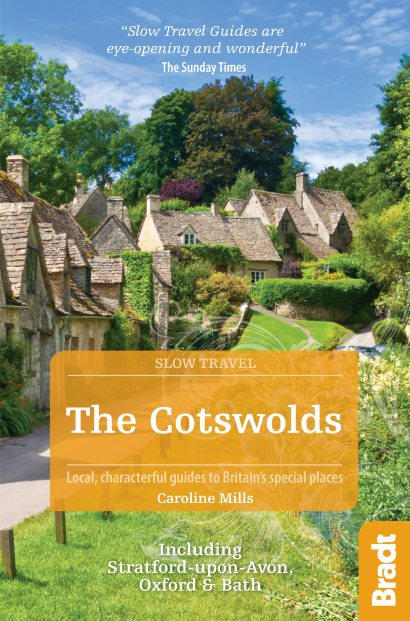The Cotswolds may be famous for its miles and miles of stone walls (collectively, longer than the Great Wall of China), but it’s the limestone base that helps to make the grasslands look as glorious as they do.
Here, author of Slow Travel: The Cotswolds, Caroline Mills, offers recommendations of where to see some of the Cotswolds’ finest.
Minchinhampton Common and Rodborough Common
Between the Nailsworth Valley and Golden Valley, the land rises sharply with Minchinhampton Common and Rodborough Common, closer to Stroud, keeping the pair apart. They are very popular with walkers and picnickers for the views over the Five Valleys but, owing to the lie of the land and the distance between viewpoints, you’ll never see everywhere all at once.
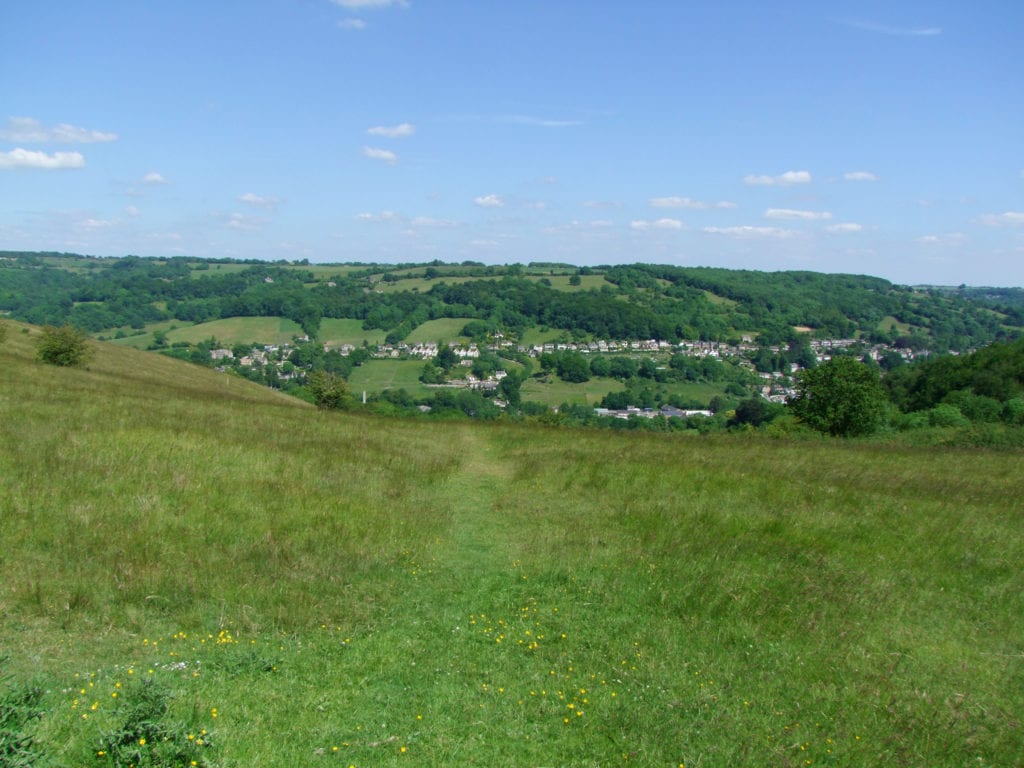
Head to the west side of Rodborough Common to look over Stroud, the Painswick Valley and Selsley Common, and the east side for a view of Golden Valley overlooking Thrupp and Brimscombe. The west side of Minchinhampton Common gives the best views of Nailsworth, while from the east side you can see up the Toadsmoor Valley and further along the Frome Valley. From up here you get the sense of how tightly compact all of these valleys are.
Cranham Common
This 48-acre piece of hillside is classic unimproved limestone grassland, grazed using traditional methods and issuing cowslips in spring, orchids in early summer and later in the year, knapweed, harebells and wild thyme. It is one of my absolute favourites, and a part of the Cotswold Commons and Beechwoods National Nature Reserve.
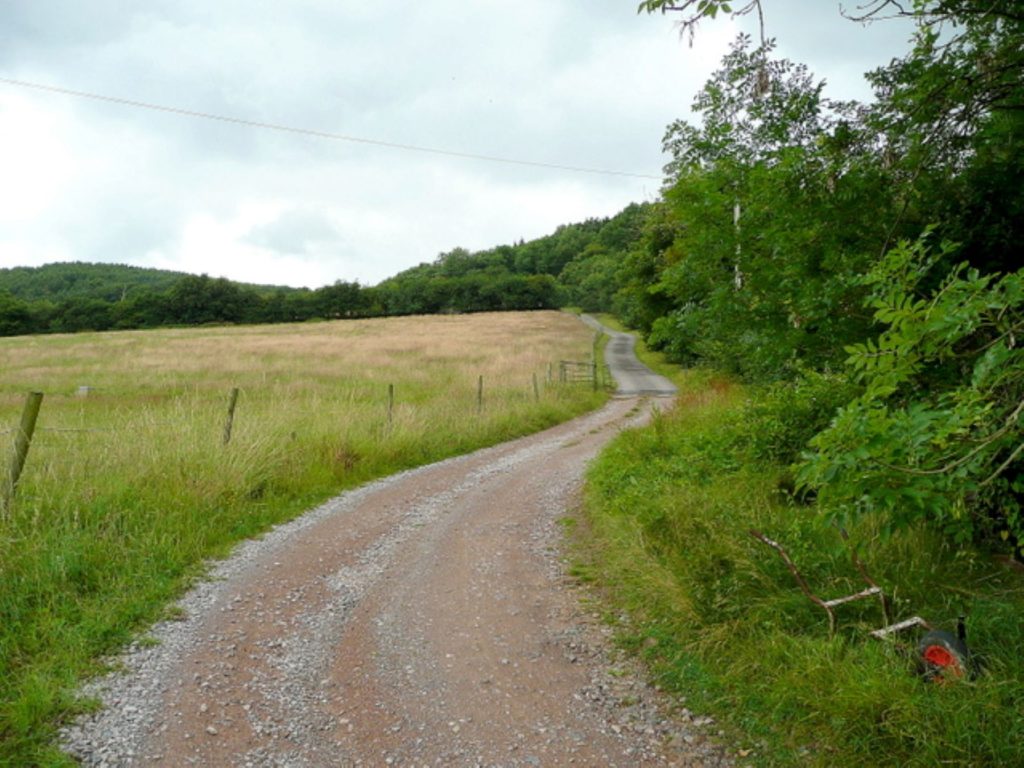
You may come across the rare rufous grasshopper, a very localised species with distinctive whitetipped, club-shaped antennae, or hear the skylarks singing above your head. It’s an ideal place for a picnic – I’ve particularly noted a bench on the single-track road that crosses the common and connects the two parts of Cranham village. It’s one of the best spots to view the autumnal changing colours of Buckholt Wood.
Crickley Hill
Crickley Hill is one of the best places in the Cotswolds to see the strata of oolitic limestone; the hill cliffs have the thickest section in Britain of pea grit, a particular kind of poor-quality limestone that is made up of pea-like nodules brimming with fossils. The area around the hill is a country park with beech and oak woods, grassland, old quarries and an archaeological site where 5,000 years of occupation are exposed, featuring a Neolithic causewayed enclosure and an Iron Age hillfort.

Five circular trails from the car park are waymarked, variously including
the hillfort, the parkland, a short trail for families, the scrubs and the
steepest section of the park on the edge of the escarpment.
Cleeve Common
Three masts close to the highest point on Cleeve Common make this hill an obvious beacon for miles. To the west are huge views over Cheltenham, with Prestbury Park, the home of the Cheltenham Gold Cup, looking to be just a few furlongs away from the foot of the hill.
The Severn Vale and the Black Mountains in Wales are clearly evident too – at least on a day when the wind is not blowing the rain sideways. To the east are views over Winchcombe and Sudeley Castle; you realise from here just how undulating that particular area of the Cotswolds is.
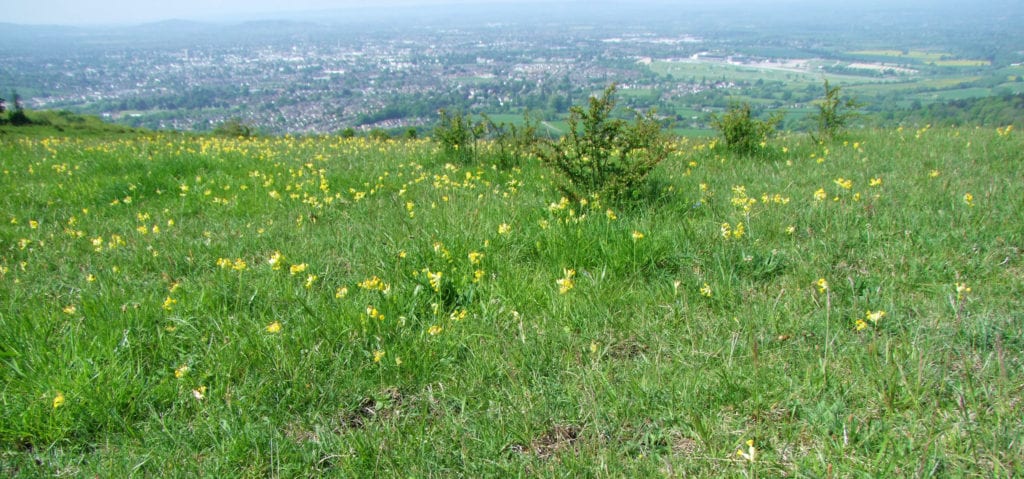
The Cotswold Way passes along the very western edge of the escarpment, precariously so in places. Yet, if you can stomach the sheer drops below that appear just west of the three masts, this is where some of the finest displays of wild flowers are.
This area is known as the Prestbury Hill Reserve, owned by Butterfly Conservation. It has some of the best unimproved grassland on Cleeve Common, with steep, stony slopes rich with butterflies such as the chalkhill blue and Duke of Burgundy feeding off the flowers.
Selsley Common
At the centre of the common is the top of the ridge that divides this valley from the western edge of the Cotswold escarpment. It is rich in the wild flowers – and therefore birds and butterflies – most associated
with the limestone grassland of the Cotswolds.
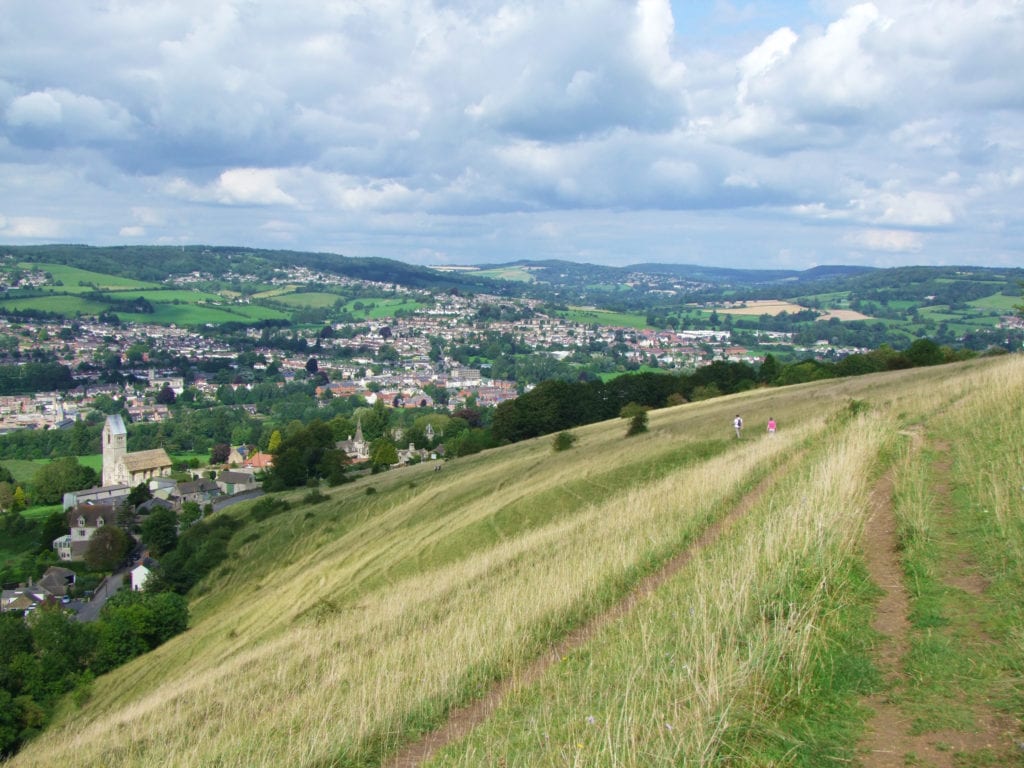
Formerly quarried, the land dips and rises and, owing to the natural curve of the land, you get one view disappearing as another arrives. Yes, there are views over the Severn Vale and the Forest of Dean but what’s best about the common are the views over Stroud and other valleys, the walks and picnicking opportunities, despite the often windy conditions.
Uley Bury
Making the most of a promontory between the edge of the scarp and knobbled valley is the scheduled Ancient Monument of Uley Bury. The large, 32-acre Iron Age hillfort once was home to an industrious farming community that made woollen cloth and early coinage.
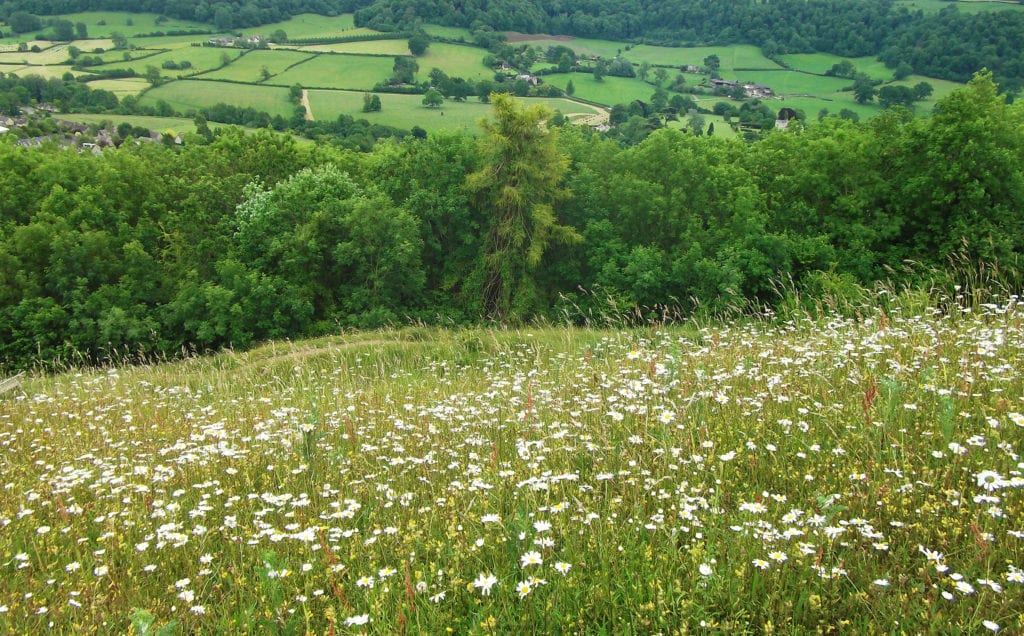
As a prime example of unimproved grassland, the terraced structure is grazed using traditional methods to stop the encroachment of trees and walkers are not allowed in the centre. But you can walk the full distance around the mile-long ramparts using the circular bridleway for unmitigated views.
I’ve taken several walks here over the years and, in addition to the profusion of common blue and gatekeeper butterflies and coppery gold damselflies, I’m always struck by the views over the Severn Vale on the northwest side and those over the Ewelme Valley to the southeast.
But by far the most captivating aspect is the short stretch of rampart facing the southwest. On occasion my children and I struggle to stay upright on the edge of the rampart as the wind hits this projecting side of the escarpment hard. But the views over the landmark hills of Downham Hill (or Smallpox Hill locally), Cam Long Down and Peaked Down towards Stinchcombe Hill are out of this world.
